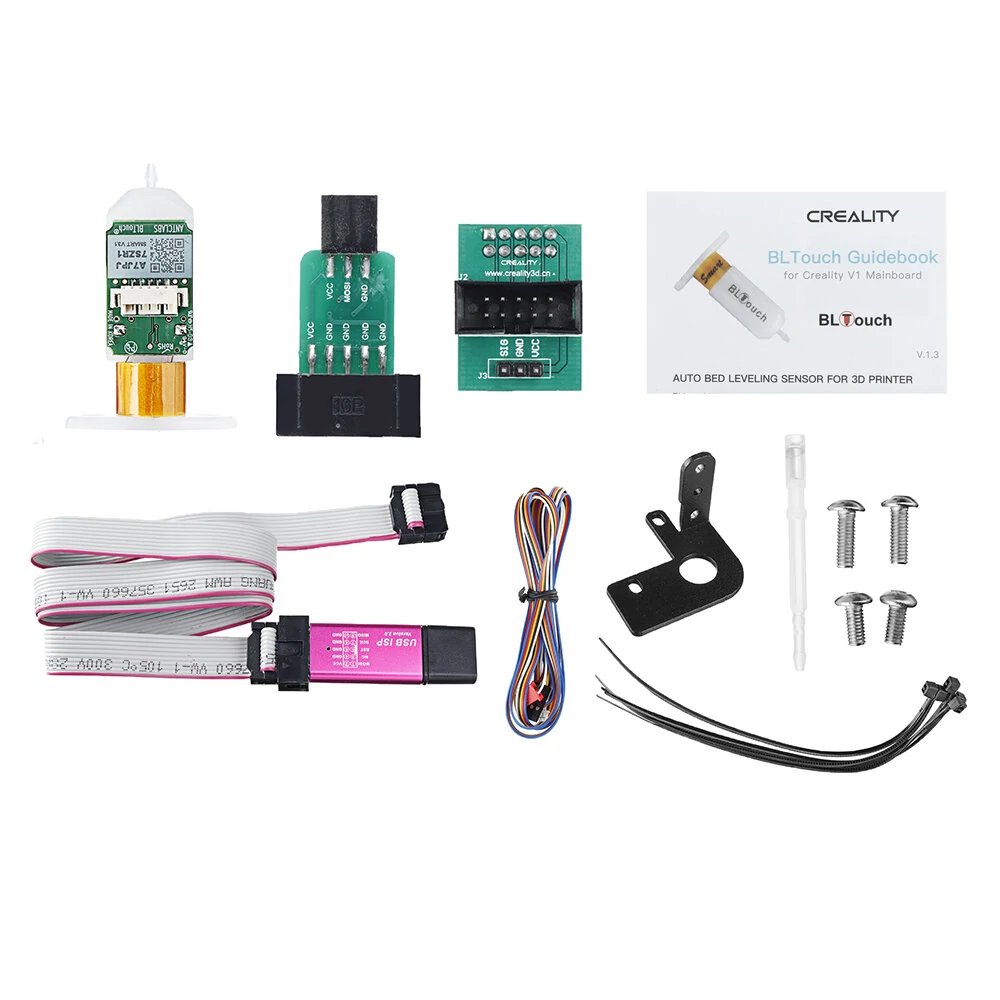BL Touch for bed levelling

One of the first upgrades that I did to my Ender 3 pro was to add a BL Touch bed levelling sensor.
Before getting this sensor, levelling (or more correctly tramming) the bed needed me to do many manual steps. Using this sensor, instead of me having to figure what the settings for each corner needs to be to get everything to be in the right place, I can now run an Auto Bed levelling routine.
This has the effect of telling the printer the shape of the bed, that is the direction of a slant in any direction. Using Octoprint (I’lll talk about this in another post) I can get the details of the bed’s slant, and so I can make corrections with the wheels and dial things in to perfect.
The upshot of this is that I don’t often have problems with prints failing due to the bed not being level or the nozzle being in the wrong place.
The kit in the picture does look a little intimidating, indeed it is a little bit like that. Firstly, I needed to flash the firmware of my Ender 3 to make this work, whilst I was at it, I also modified the firmware slightly to suit my desire a little better. (I might do another post on this at some point)
The kit I bought had everything needed, the usb device needed for programming the board. A “Pin 27” breakout board that allows the sensor to work with my mainboard, long cabling so that it can be routed easily and a bracket so that it can be mounted on the stock print head. The zip ties are used to help keep the cabling tidy. However, I’d already decided to upgrade from zip tie based to a nylon sleeve over the cabling, it’s a little fiddly to install but I feel it offers better protection and helps to remove some of the stresses on the wiring (not that there is much)
This upgrade is relatively simple to do, although it’s not for the feint of heart as it does involve modifying the stock Marlin firmware, and taking the printer apart to get at the mainboard. That said, this printer is designed to allow people to do just that.
My experience is that a bed levelling sensor is something that everyone should add to their printer, it really does help to make the calibration at the start of a print easier to get right.
